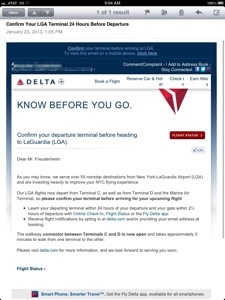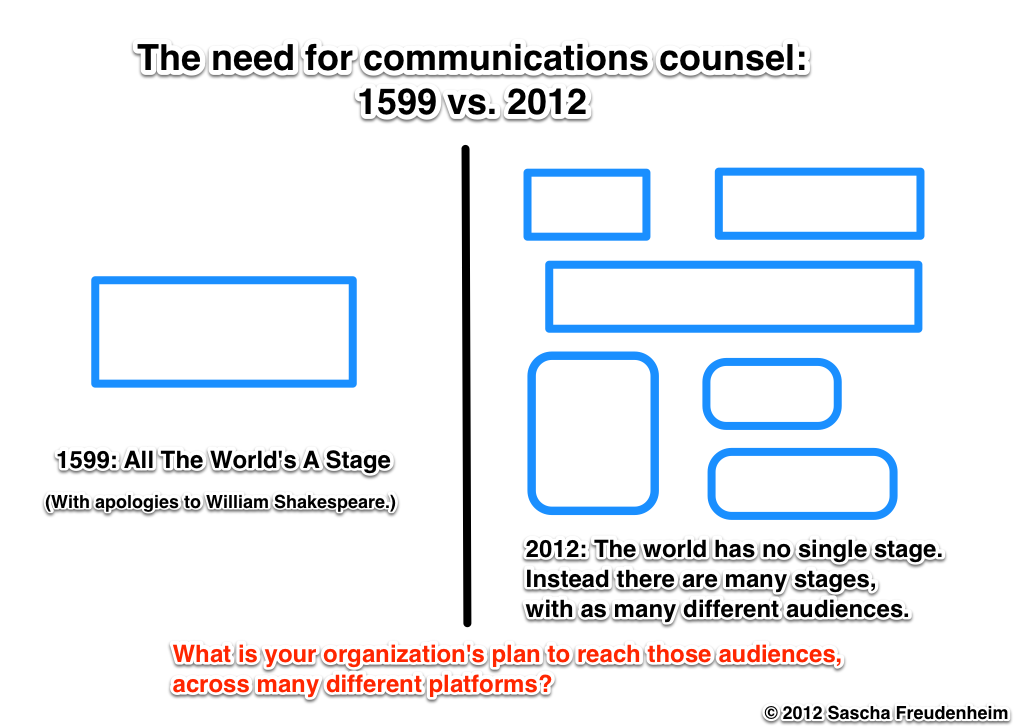On January 23rd, I received an email from Delta airlines about my flight from LaGuardia on the 26th. The subject line was “Confirm Your LGA Terminal 24 Hours Before Departure,” and the gist was: Delta now operates out of two terminals, so check before your flight and we will make sure you get to the right one.
As a frequent traveler, I appreciate this sort of thing. Racing from one terminal to the next to catch a flight is exhausting, and I thought it was great that instead of forcing me to guess or sort it out when I got to the airport, Delta was telling me ahead of time.
Unfortunately, the email was about as good as it got. Yesterday, I looked at it again, in preparation for today’s travel. The Delta website link helpfully took me to a page where I could access flight schedules–but not directly info about my flight and its terminal. The Delta mobile app–otherwise helpfully designed–showed me my boarding pass, but no terminal or gate info. The “Flight Status” function showed gate C29–presumably Terminal C–but since getting this info was otherwise difficult, it was hard to know if that was accurate.
The app included a link for easy Tweeting to Delta (@DeltaAssist) so I did. The response did not confirm the terminal–the whole point!–and instead said “@DeltaAssist: My apologies for the inconvenience. Some flights are not assigned a gate until the day of departure. Thank you. *CS”.
So here’s a tip, Delta: good on you for trying. But either take the user directly to a page with the relevant info–clearly marked and displayed–or just send a letter saying “Heads-up, we run out of two terminals, so leave yourself extra time because we may not assign a gate until shortly before your flight.” I would rather spend 10 more minutes in the airport to make sure I have the time I need than 20 minutes trying to sort through multiple computer systems for buried or unavailable information.
****
Speaking of systems and airlines, TripIt is a great system–web, iPad, iPhone, etc.–for those who travel a lot. Itineraries are automatically uploaded just by emailing them, and the “Pro” version tracks flight delays, can provide directions, and links to relevant travel providers easily.
So it is a real shame that Delta, United/Continental, American, and other major US airlines refuse to let TripIt users have access to their mileage point systems via the app. Given the level of hostility towards airlines, because of their often poor service and even-poorer communications skills, it seems like a ridiculous step to prevent flyers from using this tool to track their points in one place. Especially when more than 100+ other airlines and systems are part of the system. What gives?
Probably that they don’t care, much the way airports don’t, as astutely noted in this recent post by Seth Godin.





